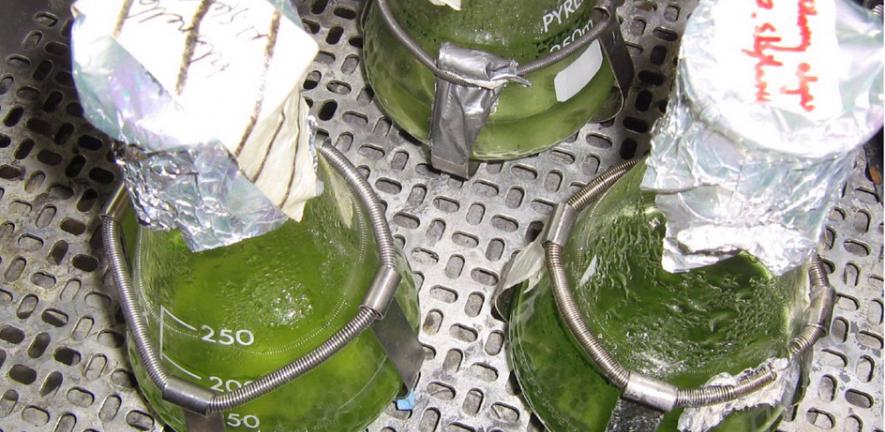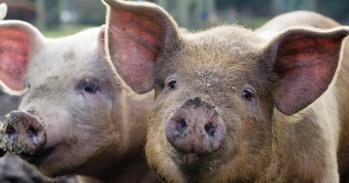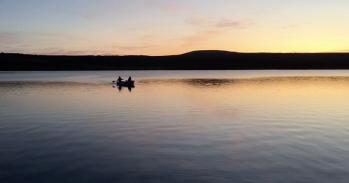
The Bioenergy Initiative is bringing biology and engineering together to address the challenge of meeting our future energy needs.
The Bioenergy Initiative is bringing biology and engineering together to address the challenge of meeting our future energy needs.
Plants are the most important natural resource on the planet. Not only do they provide all the food we eat, either directly or indirectly as animal feed, but they are also an important source of building materials and biopolymers, such as rubber, as well as many important pharmaceutical products.
Now plants are increasingly being exploited as a source of renewable energy. Plants harness solar radiation by photosynthesis; because this fixes atmospheric CO2 to produce biomass, using plants as a source of energy is potentially carbon neutral. In addition, compared with other sources of renewable energy, biofuels also offer the major advantage of providing a source of liquid fuel, which is required for transport.
But biofuels have also come under criticism. So-called first-generation biofuels are produced by fermentation of starch from crops such as maize to yield ethanol, or are derived from plant oils yielding biodiesel. Although the amounts produced are small (approximately 3% of European transport fuel energy consumption comes from first-generation biofuels), the use of food crops as a source of raw materials at a time when populations are increasing in size has led to a ‘food versus fuel’ debate.
Sources of alternative biofuel feedstock that don’t compete with food production are needed. Within the past two years, scientists from several Cambridge departments have come together to form the Bioenergy Initiative to explore the potential of next-generation biofuels. These interdisciplinary collaborations are tackling the technical and environmental obstacles that must be addressed to make next-generation biofuels commercially viable. The research is focusing on two main areas: developing fuels based on non-food crops and the parts of food crops that are normally discarded as waste, and developing ways of harvesting energy from algae.
Plants for bioenergy
Plant material such as wood and straw has the potential to be part of the low carbon solution to replace our fossil-fuel-based liquid transport fuels, provided an environmentally, socially and economically sustainable production method is found. Plants store most of the carbon they take from the atmosphere in their cell walls as polysaccharides. Instead of burning plants to release energy, the plant biomass could be more usefully converted to liquid fuels such as ethanol by chemically releasing these sugars, and then using microbes to ferment them to fuels. This requires that as much as possible of the cell wall polysaccharides are used, with minimal expenditure of energy and minimal use of expensive chemical and enzymatic treatment to extract them. Much research is needed to make this an industrial reality.
Early in 2009, the UK Biotechnology and Biological Sciences Research Council (BBSRC) announced a £27 million investment in research in this area. The new virtual BBSRC Sustainable Bioenergy Centre (BSBEC) is a partnership of six research hubs and industry. As part of this, Dr Paul Dupree in the Department of Biochemistry leads the BSBEC Cell Wall Sugars Programme in Cambridge. The Programme aims to improve the energy conversion process by understanding how sugars are locked into the plant biomass.
Up to 10 million tonnes of wheat straw could be available in the UK each year for energy production. If converted to ethanol, this could generate a few percent of UK transport fuel requirements. Increases beyond this are possible if crops such as willow or Miscanthus grass are grown on land that is unsuitable for food crops. Cambridge BSBEC researchers are contributing to studies on the farming of these crops at Rothamsted Research, Hertfordshire, to improve yields and to understand how to optimise sustainability of the crops in terms of energy input and biodiversity.
By analysing how sugars are locked into plant cell walls, research in the Dupree group aims to identify the best plants and the right enzymes to release the maximum amount of sugars for conversion to biofuels. The research team is building links with industry and other research centres to ensure their findings will increase the sustainable use of plants for fuels and other renewable products.
Pond slime to the rescue
The other major strand of research being undertaken in the Initiative has focused on algae. These simple aquatic plants are responsible for an estimated 50% of global carbon fixation and offer considerable advantages compared with biofuels from land crops. Many species are able to produce high levels of hydrocarbons, and they can also divert photosynthetic energy into another ready-to-use fuel, hydrogen. Algal productivity can be much higher than that of land plants per unit area, because of their fast growth rates, and they can be grown on marginal land, or even offshore, where they don’t compete with food crops.
However, there is little or no infrastructure for the cultivation and harvesting of microalgae on a large scale, apart from commercial operations employed for the production of high-value products such as the food supplement astaxanthin, which is used in the fish industry. Moreover, for fuel production, cost margins are critical, and most importantly the energy that is obtained from the fuel extracted must be greater than that used in the process. To address some of the many difficulties that will be encountered in attempts to commercialise biofuel production from algae, the Algal Bioenergy Consortium (ABC) was founded in 2007 by Professor Alison Smith (Department of Plant Sciences), together with Professor Chris Howe (Biochemistry), Dr John Dennis (Chemical Engineering and Biotechnology) and Dr Stuart Scott (Engineering).
A major issue is which algal species to grow. Although most people are familiar with the two broad categories of algae – seaweed on the beach or the scum that grows on ponds or on the patio – the algal kingdom is incredibly diverse. However, our knowledge of algal biology in general is poor, and we know even less about how these organisms would behave in the large-scale dense cultures that would be needed for biofuel feedstock production.
The research focus of the ABC is to study a few species in depth, taking advantage of molecular tools that are being developed for some model species. Through studying ways in which algae make fuel molecules and how the algal cell wall is built, the researchers aim to discover ways to increase the extraction of fuel molecules with maximum yields.
Together with Dr Adrian Fisher in the Department of Chemical Engineering and Biotechnology, the ABC is also investigating ways of harvesting hydrogen as an energy source in a biophotovoltaic device. The method is based on ‘stealing’ electrons from the photosynthetic process. Although currents so far are low, with funding from the Engineering and Physical Sciences Research Council (EPSRC) and the formation of a University spin-out, H+ Energy, the combination of biological and engineering approaches is helping to optimise the prototypes.
Part of the energy spectrum
At the present time, an estimated 1 million years’ worth of fossil fuel deposition is consumed each year. As fossil fuels become scarcer and more expensive to extract, and carbon emissions increase as a result of their use, renewable sources of energy will be essential. Given the size of the challenge to provide energy security in a sustainable way, it is important to explore the entire spectrum of possible energy sources. Biofuels from plants and algae have the potential to offer both a sustainable and carbon-neutral supply, but many hurdles need to be overcome before this potential is realised. With the critical mass of bioenergy researchers now working in Cambridge, the Bioenergy Initiative has the opportunity to play a major role in tackling these issues.
For more information, please contact the authors Professor Alison Smith (as25@cam.ac.uk) at the Department of Plant Sciences and Dr Paul Dupree (pd101@cam.ac.uk) at the Department of Biochemistry, or visit www.bioenergy.cam.ac.uk/
This work is licensed under a Creative Commons Licence. If you use this content on your site please link back to this page.





